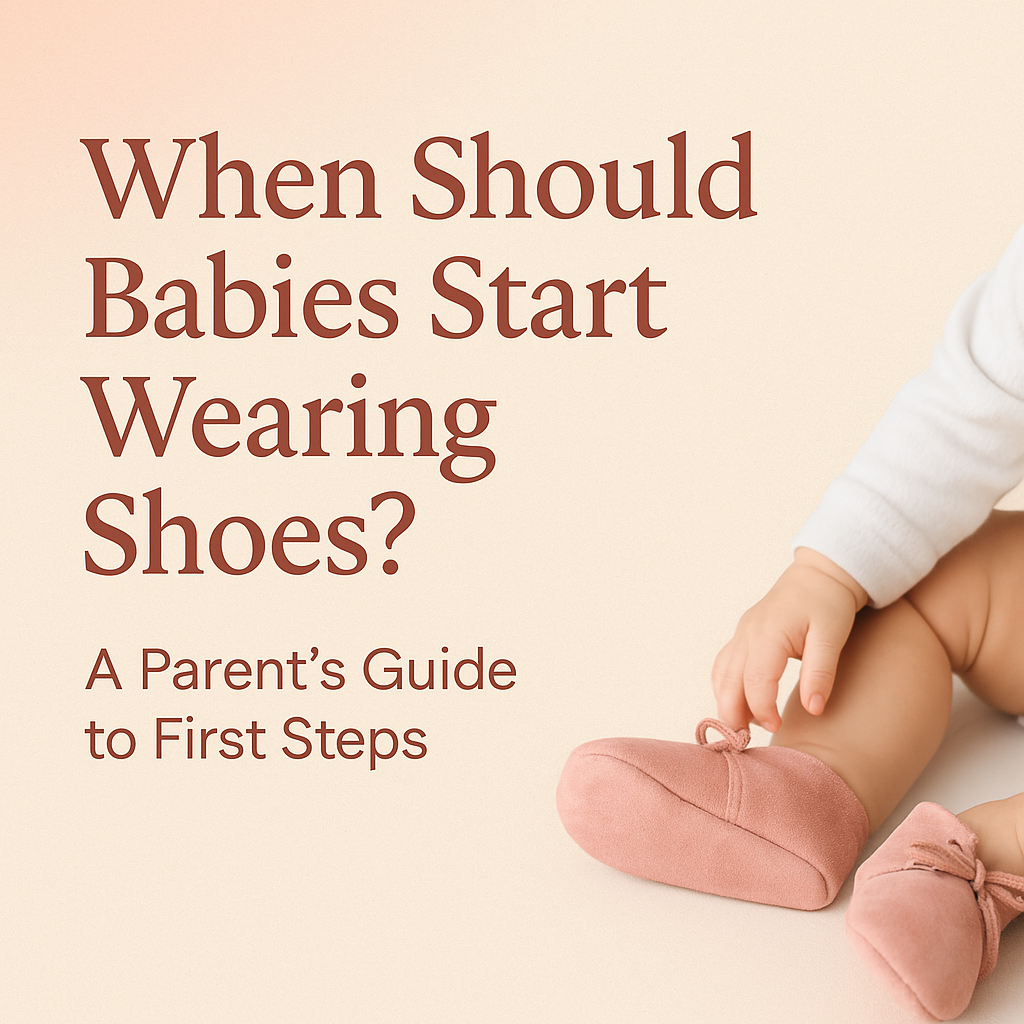
When Should Babies Start Wearing Shoes? A Parent’s Guide to First Steps
Distribuie
Your baby’s first steps are one of the most exciting milestones of early parenthood. But with so many adorable shoes on the market, it’s easy to wonder: when should babies actually start wearing shoes? In this guide, we’ll walk you through everything you need to know—from the ideal timing to essential shoe features and what to avoid—to keep your little one safe, supported, and smiling.
✅ Signs Your Baby Is Ready for Shoes
Babies don’t need shoes until they begin walking outdoors or on rough surfaces. Until then, going barefoot (or wearing socks) is best for natural foot development. But when you see the following signs, it might be time to invest in those first real shoes:
-
Your baby is walking independently indoors for a few weeks.
-
They start exploring outside (parks, sidewalks, daycare settings).
-
You notice worn or dirty socks after walks outside.
-
They try to stand or walk on uneven or textured surfaces.
These milestones usually occur around 10 to 16 months, though every child is different.
🦶 Why Barefoot Is Best — Until It’s Not
When your baby is learning to walk, barefoot is ideal indoors. Walking without shoes strengthens muscles in the feet and ankles and helps with balance, coordination, and confidence. Soft-soled socks or booties are fine on smooth, indoor floors.
However, once your child starts exploring outdoors or in environments where there may be dirt, stones, or slippery surfaces, protective footwear becomes essential to avoid injury and provide grip.
👟 What to Look for in First-Step Shoes
The best first shoes aren’t about fashion—they’re about supporting your baby’s natural development while offering protection. Here are the key features to look for:
-
Soft, flexible soles: Allow natural foot movement and sensory feedback.
-
Non-slip grip: Helps prevent slips on smooth or outdoor surfaces.
-
Lightweight materials: Avoid heavy shoes that affect balance.
-
Breathable fabric: Prevents sweating and keeps feet comfortable.
-
Secure closures: Velcro straps or elastic ensure shoes stay on without squeezing.
Avoid rigid or stiff shoes—they can hinder your baby’s foot development.
❌ Common Mistakes to Avoid
Many parents unintentionally make these mistakes when choosing their baby’s first shoes:
-
❌ Buying shoes too early: Premature use can restrict natural movement.
-
❌ Choosing the wrong size: Shoes that are too big or too small affect walking.
-
❌ Prioritizing style over function: Fancy shoes often lack grip or comfort.
-
❌ Ignoring the importance of trying them on: Fit matters—every baby’s foot is different.
Pro tip: Always check for room to wiggle toes and no red marks after wearing.
🛑 Recommended: MiniSteps Soft Moccasins for First-Time Walkers
Our MiniSteps Soft Moccasins are designed with your baby’s first steps in mind. They feature ultra-flexible soles, anti-slip grip, and breathable materials that move with your child. Easy to slip on, yet secure enough to stay on active feet, they’re a favorite among parents who want comfort, safety, and adorable style in one package.
Ready to take that first step? Shop Soft Moccasins now.
Conclusion: Every child grows at their own pace, but knowing when and how to introduce shoes can make a big difference in comfort and confidence. With the right timing and the right pair, your baby’s first steps can be the beginning of many happy adventures.
